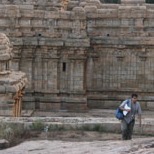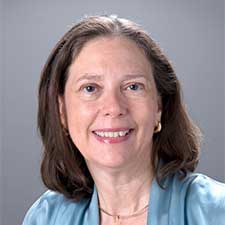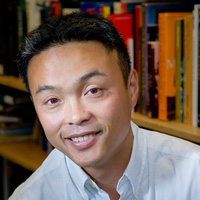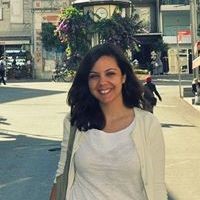
Editorial Board

Editor in Chief
Nancy Micklewright
Nancy Micklewright, head of public and scholarly engagement, joined the staff of the Freer|Sackler in 2010. She oversees public programs for adults and family audiences, research and scholarly publications, and visitor engagement. Recently she collaborated with Johns Hopkins University students and F|S staff to produce the exhibition In Focus: Ara Güler’s Anatolia (2013). Before her arrival at the Freer|Sackler, she was senior program officer at the Getty Foundation (2001–10), where she was responsible for design and oversight of international grant programs supporting museum- and university-based programs in art history.
Micklewright began her career as a professor of the history of Islamic art and architecture and the history of photography, teaching for twelve years at the University of Victoria in British Columbia, Canada. Her current research focuses on the history of photography in the Ottoman Empire, particularly Istanbul. She is the author of A Victorian Traveler in the Middle East: The Photography and Travel Writing of Annie Lady Brassey (2003) and the editor, with Reina Lewis, of Gender, Modernity and Liberty: Middle Eastern and Western Women’s Writings; A Critical Sourcebook (2006), as well as numerous articles. She has a BA, MA, and PhD from the University of Pennsylvania in the history of Islamic art and architecture.

Advisory Board Member
Nachiket Chanchani
Nachiket Chanchani’s interests span many mediums, regions, and time periods. Currently, his research and writing about South Asian and Himalayan art, architecture, and visual culture has three main components: (1) investigating the expansion of sacred geographies, the movements of builders, and the creation of a mosaic of polities in the Central Himalayas and assessing how these activities intersected with stone temple construction and the development of sculptural form between the seventh and the twelfth century CE; (2) theorizing strategies to account for the production, dissemination, and performance of the linguistically hybrid and profusely painted scrolls and manuscripts of pre-Mughal western India; and (3) tracing the shadow of traditional Indian art, modern collections, and related scholarship on creative works of avant-garde Euro-American artists.
Chanchani’s recently published journal articles include “From Asoda to Almora: Maru-Gurjara Architecture in the Central Himalayas” in Arts Asiatiques 69 (2014), “The Jageshwar Valley, Where Death is Conquered” in Archives of Asian Art 63.2 (2013), and “The Camera Work of Ananda Coomaraswamy and Alfred Stieglitz” in History of Photography 37.2 (2013). He has held a postdoctoral fellowship at the Freer|Sackler and a Nehru Trust fellowship at the Victoria and Albert Museum in London. He has also been involved with curatorial projects at the Philadelphia Museum of Art and the Museum of Fine Arts, Boston.

Advisory Board Member
Christiane Gruber
Christiane Gruber is the associate professor of Islamic art at the University of Michigan. Her primary areas of research are Islamic book arts and codicology, paintings of the Prophet Muhammad, and Islamic ascension texts and images, about which she has written two books and edited a volume of articles. She authored the Library of Congress’s online catalogue of Islamic calligraphies as well as edited a volume of articles titled The Islamic Manuscript Tradition. Gruber also specializes in modern Islamic visual culture and postrevolutionary Iranian visual and material culture. She has written several articles and coedited two volumes on the topic. She recently completed her third book, titled The Praiseworthy One: The Prophet Muhammad in Islamic Texts and Images.

Advisory Board Member
Carol Huh
Carol Huh, associate curator of contemporary Asian art, became the Freer|Sackler’s first curator of contemporary art in 2007. Through exhibitions, acquisitions, and public programs, Huh focuses on current artistic production related to Asia. Recent projects include the museum’s Perspectives series including works by Y.Z. Kami, Anish Kapoor, Hai Bo, Hale Tenger, Rina Banerjee, Ai Weiwei, Chiharu Shiota, and Michael Joo). Huh also organized Moving Perspectives, the museum’s first series of exhibitions focusing on video art from Asia. Special exhibitions include Notes from the Desert: Photographs by Gauri Gill (2016), Symbolic Cities: The Work of Ahmed Mater (2016), Sense of Place: Landscape Photographs from Asia (2013), Nine Deaths, Two Births: Xu Bing’s Phoenix Project (2013), Shadow Sites: Recent Work by Jananne al-Ani (2012), and Fiona Tan: Rise and Fall (in-house curator, 2010).
Huh is a member of the Smithsonian Artist Research Fellowship Committee and the Smithsonian Networks Review Committee. She completed her undergraduate and graduate studies at Georgetown University in Washington, DC.

Advisory Board Member
Jan Stuart
Jan Stuart has degrees in Chinese art, archaeology, and East Asian studies from Princeton and Yale Universities, and she is fluent in Mandarin. She rejoined the Freer|Sackler as the Melvin R. Seiden Curator of Chinese Art in 2014 and is primarily responsible for ceramics, textiles, furniture, lacquer, and other decorative arts. In her previous tenure at the Freer|Sackler (1988–2006), Stuart was instrumental in bringing greater attention to the fields of Buddhist sculpture, Chinese portraits and court paintings, and ceramic and decorative arts of China through her research, publications, and exhibitions. From 2006 to 2014, Stuart was Keeper of Asia at the British Museum in London, where she oversaw a collection of approximately 125,000 objects, dating to between the prehistoric and contemporary periods, from East, South, Southeast and parts of Central Asia.

Advisory Board Member
Melanie Trede
Melanie Trede received her PhD in Japanese art history from Heidelberg University (1999), following a master’s degree in East Asian art at Heidelberg and BA studies at the Free University (Berlin) and Waseda and Gakushuin Universities (Tokyo). She has been a professor of the history of Japanese art at Heidelberg since 2004; previously, she taught at Columbia University (1999) and the Institute of Fine Arts, New York University (1999–2004). Since 2012, she has been a full member of the Berlin-Brandenburg Academy of Sciences and of the Academia Europaea. In addition to numerous articles, book chapters, reviews, and entries in exhibition catalogues, Trede wrote Image, Text and Audience: The Taishokan Narrative in Visual Representations of the Early Modern Period in Japan (2003) and Hiroshige: One Hundred Famous Views of Edo (2007/2010) and edited two exhibition catalogues related to Japanese art and East Asian contemporary art. Her research and publication interests include pictorial narratives and materiality studies, political iconographies and gender issues, collecting and exhibiting cultures, art historiographies and terminologies, the concept of the frame, and digital art history tools for Japanese illuminated handscrolls.

Advisory Board Member
Haicheng Wang
As an associate professor of art history at the University of Washington, Haicheng Wang’s curriculum includes surveys of Chinese art and various topics on the art and archaeology of the Bronze Age. His research centers on two areas of comparative study. The first is cultural contact, exchange, and transmission. One of Wang’s current projects is to investigate the artistic exchange between China and its neighbors in the first millennium BCE. His second area of study is the comparison of cultures assumed not to have been in contact to gain insight into possible trajectories of cultural development. His book Writing and the Ancient State: Early China in Comparative Perspective analyzes how writing was used by early states in China, Mesopotamia, Egypt, Central Mexico, the Maya region, and the Andean states. A follow-up to this book will be a comparative study of calligraphy in different cultural traditions.

Managing Editor
Zeynep Simavi
Zeynep Simavi joined the Freer|Sackler in 2011 as a research assistant. She worked on various research projects related to Ottoman art, focusing on the artistic exchange between the Ottomans and the Safavids; contemporary art, especially that of Turkey and Iran; and the formation of Islamic art in the United States. Her research on the Mehmet Ağa-Oğlu papers in the Freer|Sackler Archives led to a publication.
Simavi began to work in the Scholarly Programs and Publications Department in 2012. In addition to her work on the journal Ars Orientalis, she coordinates the museums’ fellows program and scholarly events. In 2013, she was on the curatorial team for the exhibition In Focus: Ara Güler’s Anatolia. She is currently a PhD candidate in art history at the Istanbul Technical University, continuing her research on the historiography of Islamic art. She has two master’s degrees, in media and cultural studies (2006) and in art and museum studies (2011).
